Imagine a 35mm camera with a high quality (Zeiss Tessar) f/3.5 lens, focusing down to 2 feet, a rising and falling lens board and an all-metal self-capping focal-plane shutter, taking special magazines that allow 750 single-frame (3/4 x 1 inch) exposures, and weighing no more than an 8mm movie camera.
Anyone reading this site who just finished reading the above quote is likely very interested to know what kind of German-made fantasy camera that some internet blogger came up with as their ultimate wish list camera. Yet, the above quote was originally published over 58 years ago, about a camera that was introduced another 47 years before that!
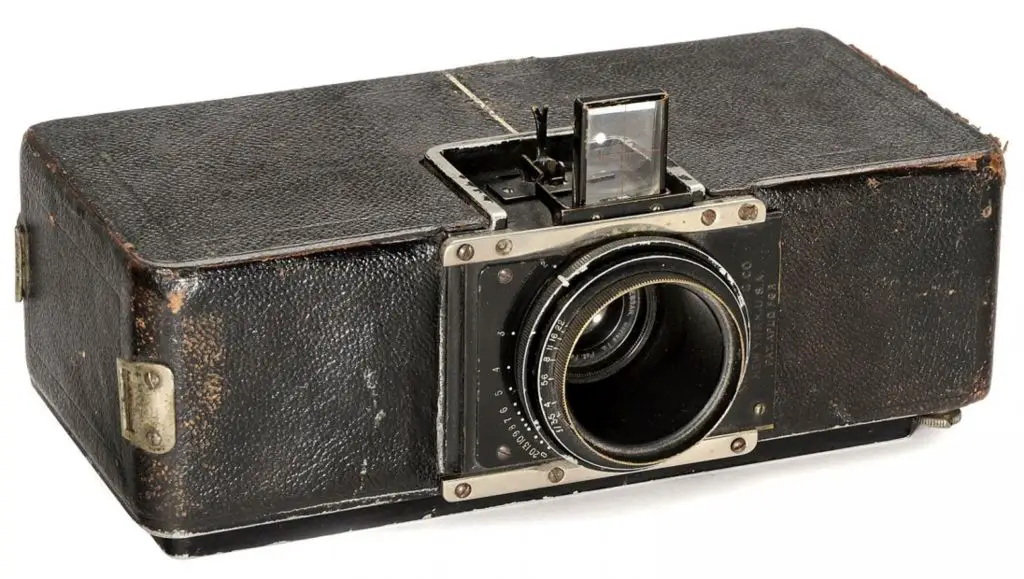
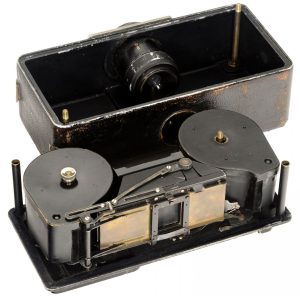
That’s right, the “fantasy” specs of the camera mentioned in the quote are not only real, but they describe the 1913 Tourist Multiple, an American (not German) made camera, designed by a tradesman named Henry Herbert.
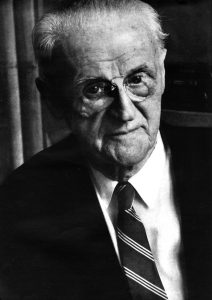
The Tourist Multiple is considered by many, including the article below from the November 1960 issue of Modern Photography, to be the very first successful implementation of a 35mm still camera. It’s debut came more than a decade before the first Leica, and 21 years before Kodak would standardize 35mm (cinema) film into the universally supported 135 format 35mm film cassette.
How the Tourist Multiple came to be was almost by accident, as in 1908, Herbert had partnered with his friend Charles Heusgen to form the Herbert & Huesgen Company. The company was an importer of photographic goods from Europe. They were the primary US distributor for Steinheil of Germany and the Paget Prize Plate Company of England.
A large part of Herbert & Huesgen’s business was with motion picture cameras, and while working with various motion picture suppliers, Henry Herbert couldn’t help but notice how often a full reel of 35mm cinema film would be left unused at the end of a roll. These “short ends” averaged around 50 feet in length and were deemed too short to be reused in another motion picture camera, so they were often sold at a steep discount.
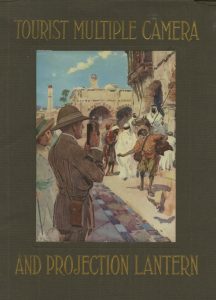
Herbert saw the potential of a camera that could use these short ends to record still photographs and got working on his idea. Nearly every bit of the camera’s design was taken from cinema cameras, including it’s 3/4″ x 1″ exposure size. More commonly referred to today as “half frame” this was actually the normal size of exposure used on cinema 35mm film. When Oskar Barnack created the first Leica still camera, people back then referred to it as a “double width” 35mm camera which is opposite of today.
The Bausch & Lomb Zeiss Tessar 50mm f/3.5 lens was straight out of the cinema camera parts bin, and allowed for extremely sharp and detailed images. During it’s use in 1960 when Modern Photography wrote this article, they shot a Tourist Multiple loaded with contemporary Kodak Plus-X film and found that the exposures could be easily enlarged to 11″ x 14″ without loss of detail.
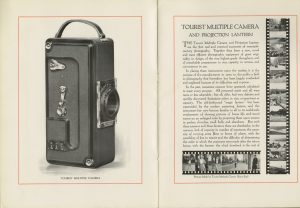
About the only things unique to the Tourist Multiple was it’s custom made all metal focal plane shutter. Featuring speeds from 1/40 to 1/200, it was tensioned by an adjustable spring, and cocked by a single lever that doubles as a film advance lever.

The idea for the 50 foot magazine was inspired by the short rolls created at the end of motion picture film reels. With a fully loaded magazine, the Tourist Multiple could shoot as many as 750 exposures on a single roll. This number was considered extravagant compared to the 20/24 or 36 exposure cassettes that would be popular throughout the 20th century, but the reasoning was that the camera would appeal to tourists (hence the name) who would use the camera in their travels to photograph an entire trip, without having to be bothered by switching rolls and storing them for development later. Just keep shooting and worry about developing after you get home, was Herbert’s thinking.
Perhaps the Tourist Multiple’s most interesting feature, was that it could also be converted to a projector. An optional projection device (I’m not actually sure how it works as I’ve never seen an image of one) could be installed in the camera and used to project positive film onto a screen. Perhaps, this is where “Multiple” comes in the camera’s name as it can be used for multiple purposes.
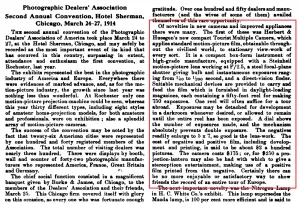
The Tourist Multiple was a revolutionary camera that was far ahead of it’s time when it was first conceived, and supported features that cameras decades later wouldn’t have. Although first designed in 1913, it would take another year and a half for the manufacturing tooling to be completed.
The Modern Photography article below says that when the camera finally went on sale, it sold at a price of $125 each, but a short blurb on page 254 of Volume XXXII of the American Journal of Photography in 1914, the price is listed as $175 for the camera, and $250 with the optional projection lantern. Curiously, this same article also suggests that the camera’s lens was a Steinheil f/2.5 lens, instead of the Zeiss Tessar f/3.5 seen on every other example. My guess is that perhaps initial prototypes used the faster Steinheil lens and therefore projected a higher retail price. This change likely occurred in the year and a half before the camera went into production.
Only about 1000 cameras were made before the outbreak of World War I, at which time production was halted and never to be resumed largely due to a lack of the tourism market which the camera was designed for.
The story of the Tourist Multiple is fascinating to me, not only for it’s unique feature set, but in how closely it’s history resembles that of Oskar Barnack’s Leica. Both cameras were produced by a company more known for motion picture cameras and both relied on a custom design necessitated from available 35mm cinema film at the time. I’d love to try out one of these some day, but it’s extreme rarity makes that unlikely. A search of recently closed auctions on eBay showed no results, and the camera price tracking site, Collectiblend has only two entries of ones being sold, the most recent was in 2003 at a price of $3107.
External Links
The Tourist Multiple is a very rare common and as a result, there has been very little written about it on the Internet. Aside from a short blurb on camera-wiki, the only site that gives any information is Max Bertacchi’s page dedicated to Early 35mm Cameras. I’ll keep this section here and if I come across any additional links, I’ll be sure to update them here.
All scans used with permission by Marc Bergman, 2019.


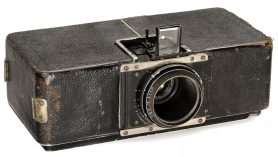
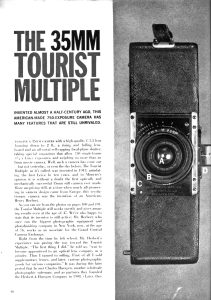
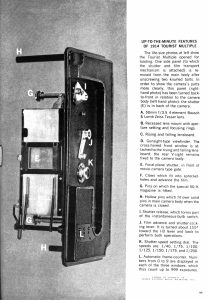
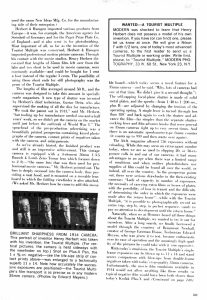

Ha, Ha! Mike you got me going with this post. Wondering how on earth you got hold of one for your review and collection.
Interesting camera and lens configuration. The lens mount appears to be a modified lens board of sorts. I have to wonder if
Zeiss may have offered some lens options. This being a still camera it was most likely not hand held so I could see a wide angle or telephoto lens or a cine-tele-lens (add-on) adaptor as was common for early Zeiss offerings. This being a 1/2 frame format it may have been used on movie sets as a way to study the images before final takes and making good use of the unexposed film cut offs. Would love to see some of the images it produced. Thank you.
Thank you for the link to Bertacchi’s website. New to me, as are a few of the cameras he describes. Looking at those could provoke a very costly GAS attack!
My last name is Huesgen and I’ve nearly bought one of these cameras two or three years ago on eBay. The leather glued to the outer case was mostly gone and a spool for the film was missing. To my memory I offered $800 and it sold for $1100.
I sold the one on eBay that Rob posted about. I bought it at an estate sale for $5. No BS. It was in a box that nobody could figure out how to open so I just bought the box not knowing what was inside. When I got home I figured out how to open it. I called around the country looking for information on it. All the camera museums told me it was likely fake. Then I sent them all the eBay listing and they all about pooped their pants.